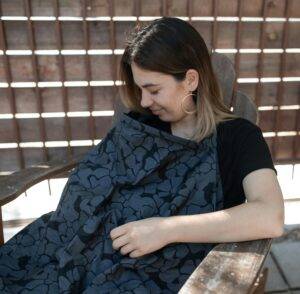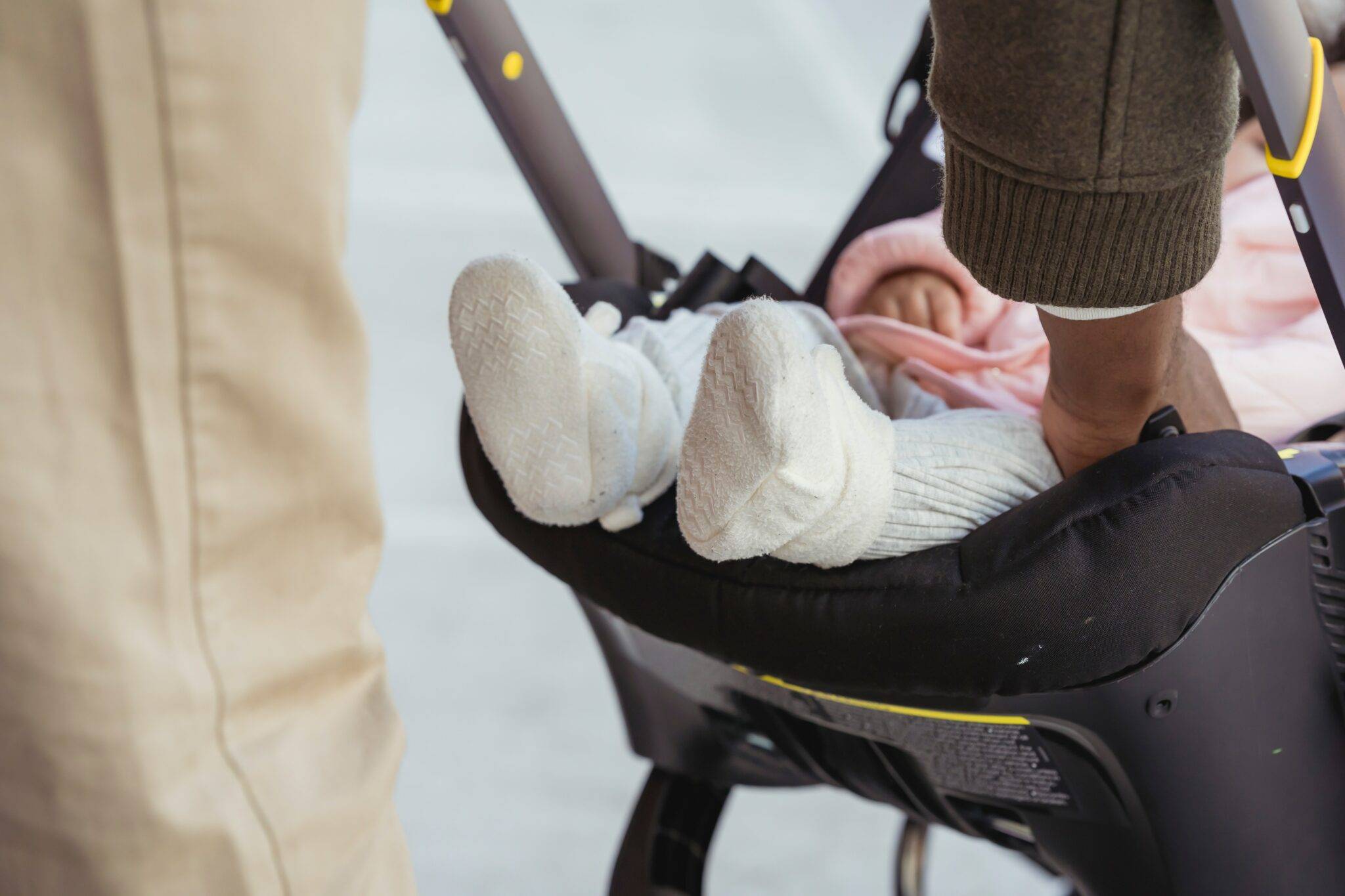Traveling as a breastfeeding mom can feel overwhelming, especially if it’s your first time balancing pumping, storing milk, and maintaining your supply while away from home. However, with careful planning, you can ensure your baby continues to receive the benefits of breast milk, even when you’re miles apart.
This guide will walk you through every step of managing breast milk while traveling—whether for work, a family trip, or a well-deserved vacation. From understanding storage rules to maintaining milk supply, here’s everything you need to know for a seamless journey.
Why Managing Breast Milk Matters While Traveling

Breast milk is often called “liquid gold” for good reason. It provides babies with essential nutrients and immune-boosting antibodies, supporting their growth and development. For breastfeeding moms, maintaining a steady milk supply is equally important, as irregular pumping or feeding schedules lead to engorgement, discomfort, or a drop in production.
Travel introduces unique challenges, like limited access to private pumping spaces, unpredictable schedules, and storage issues. However, with a proactive approach, you can navigate these obstacles and make your trip manageable.
Pre-Trip Preparation: Setting Yourself Up for Success
1. Research Airline and TSA Regulations
If you’re flying, familiarize yourself with the Transportation Security Administration (TSA) and airline regulations on breast milk and pumping equipment. Breast milk is classified as medical liquid, so it is allowed in reasonable quantities in carry-on bags and is exempt from the 3.4-ounce liquid restriction.
However, you’ll need to declare breast milk during security screening. Additionally, many airlines support breastfeeding moms but still check specific policies. For international travel, research the destination’s regulations regarding the import of breast milk and pump accessories to avoid issues at customs
Pro Tip: Print out TSA and airline guidelines to show staff in case of misunderstandings.
2. Create a Packing Checklist
Packing the right items ensures you have everything you need to pump and store breast milk during your trip. By organizing these essentials, you reduce the risk of forgetting something important. Your checklist should include:
- A portable breast pump (manual or battery-operated)
- Extra milk storage bags or bottles. These are easy to pack and allow for freezing milk flat to save space.
- A cooler bag with reusable ice packs. For keeping milk cold during transit.
- Cleaning supplies, like travel-sized dish soap, bottle brushes, and sanitizing wipes
- A power adapter. A must for international travel with different outlets.
- A pumping bra or cover for added convenience
- Extra Pump Parts: Bring backups to avoid disruptions if something breaks or gets misplaced.
By preparing these essentials, you reduce the likelihood of unexpected challenges.
3. Map Out Pumping-Friendly Locations
Look into facilities at airports, rest stops, public places, or your destination that caters to breastfeeding moms. Many airports now have lactation pods or nursing rooms with outlets and comfortable seating. Apps like Mamava help locate these spaces. If you’re staying at a hotel, request a mini-fridge or access to a shared kitchen freezer for milk storage. Knowing where you can pump ahead minimizes stress and ensures comfort during your trip.
Pumping and Storing Breast Milk During Travel
4. Stick to a Consistent Pumping Schedule
Maintaining your regular pumping routine is crucial to keeping your milk supply steady. If your baby feeds every three hours, try to pump at the same intervals during your trip. This signals your body to continue producing milk at a steady rate, preventing supply dips. This consistency prevents engorgement and mimics your baby’s feeding pattern, ensuring your body continues producing milk efficiently.
Travel Tip: Whether on a long road trip or navigating a layover at an airport, set reminders on your phone to keep track of pumping times. Also, pump before you leave for the airport or begin your journey to minimize the need for immediate pumping.
5. Stay Flexible
While having a schedule is essential, flexibility is equally important. Travel often introduces unexpected delays or changes, so be prepared to adjust your pumping routine as needed. If you miss a session, don’t panic—pump as soon as you arrive to maintain supply. Wearable pumps, such as the Willow or Elvie, are excellent tools for discreetly pumping in public areas or during activities where finding privacy is challenging.
6. Store Milk Safely
Breastmilk storage requires careful attention to temperature. Freshly pumped milk can stay at room temperature (77°F or below) for up to four hours. For long trips, a cooler bag with ice packs keeps milk safe for up to 24 hours. Once you arrive at your destination, transfer the milk into a refrigerator or freezer. Be cautious not to let milk thaw and refreeze, as this affects its quality.
Key Storage Guidelines:
- Room temperature: Up to 4 hours
- Cooler with ice packs: Up to 24 hours
- Refrigerator: Up to 4 days
- Freezer: 6 months (or up to 12 months for deep freeze)
These time frames allow you to store milk safely during most travel types, provided you have access to refrigeration or a cooler bag. For more detailed advice on milk storage, check out this article.
7. Use a High-Quality Cooler Bag
Invest in a reliable cooler bag with gel or ice packs to keep milk cold for extended periods. Always ensure milk remains at a safe temperature by using a thermometer if needed. Avoid partially thawing frozen milk, as this affects its safety and quality.
8. Label and Organize Milk Bags
When storing breast milk, always label bags or bottles with the date and time of expression. Use older milk first to ensure nothing goes to waste. Many moms find it helpful to store milk bags flat to save space in coolers or freezers.
Flying With Breast Milk
9. Navigating Airport Security
Air travel adds extra logistics when transporting breast milk. During TSA screening, you can expect milk, coolers, and ice packs to undergo inspection. TSA policies state that milk should not be opened or contaminated during screening. If you’re using frozen gel packs or ice packs, ensure they’re solid during screening, as partially melted packs may be flagged. To avoid unnecessary delays, print out TSA guidelines in advance and bring them with you to show agents if needed.
10. Pumping In-Flight
If you need to pump during your flight, be keen on privacy and comfort. Use a compact, battery-operated pump, and consider wearing a hands-free pumping bra. Bring a nursing cover for privacy if you plan to pump at your seat, or ask flight attendants if a private space is available you can use. Others opt to use the airplane restroom if it is large enough. Store milk securely after pumping to prevent spills during turbulence.
Maintaining Your Milk Supply
11. Stay Hydrated

Dehydration negatively impacts milk production, so make a conscious effort to drink plenty of water throughout your trip. Carry a reusable water bottle and aim to drink at least 8 ounces of water every time you pump or feed your baby. Air travel can be dehydrating, so be mindful of your fluid intake.
12. Prioritize Nutrition
Travel often leads to irregular meals or reliance on fast food, but maintaining a balanced diet is crucial for milk production. Eating nutritious, balanced meals helps sustain your milk supply. Focus on foods rich in protein, healthy fats, and whole grains. Pack travel-friendly snacks like trail mix, yogurt, or protein bars to ensure you’re eating regularly even on the go.
13. Manage Stress
Travel can be stressful, and stress may affect milk supply. Combat this by building in moments of relaxation during your trip. Deep breathing, short walks, stretching, or calming music help you stay centered.
Pro Tip: If you’re traveling for work, schedule downtime into your itinerary to recharge.
Overcoming Common Challenges
14. Limited Pumping Spaces
If you find yourself without a dedicated space, get creative. Wearable breast pumps, like the Willow or Elvie, allow you to pump discreetly in public areas. Alternatively, ask for private accommodations, such as using an unused meeting room or a vehicle with tinted windows.
15. Forgetting Equipment
If you accidentally forgot pump parts at home, check local stores or pharmacies, as these may carry replacements. Retailers carry popular pump brands and accessories. In emergencies, hand expression can be an effective alternative to pumping.
16. Milk Gets Warm
If milk has been out of a cooler or refrigerator for too long, it’s safer to discard it than risk giving it to your baby. Though losing milk can be frustrating, prioritizing your baby’s safety is always the right choice.
17. Low Supply
If your milk supply decreases during travel, try power pumping—short, frequent pumping sessions—to stimulate production. Staying hydrated, eating well, and resting also play a significant role in maintaining supply.
Handling Extended Travel
18. Shipping Milk Home
If you’re away for an extended period, shipping breast milk home may be a practical solution. Services like Milk Stork provide specialized coolers or refrigerated milk containers during transit. This allows you to continue building your supply without worrying about storage constraints.
Steps for Shipping Milk: (1) Freeze the milk before shipping. (2) Use a courier that guarantees overnight delivery. (3) Ensure proper labeling to avoid mishandling.
19. Explore Local Resources
If you intend to stay in one location for an extended period, look for local breastfeeding support groups or lactation consultants. They can advise and help you navigate challenges unique to the area.
20. Freezing and Refreezing
For trips without reliable refrigeration, dry ice can freeze breast milk for several days. Handle it carefully, as it requires proper ventilation and protective gloves. Be cautious when refreezing partially thawed milk, which may compromise its safety.
Additional Considerations
- In some countries, public breastfeeding may be frowned upon, so check local customs ahead of time
- If traveling to areas with health risks, consult a healthcare provider about necessary precautions and medications that are safe while breastfeeding
Frequently Asked Questions
Can I carry breast milk if I’m not traveling with my baby?
Yes! TSA regulations allow you to transport breast milk even if your baby isn’t accompanying you. You need to declare it at security checkpoints.
How do I pump discreetly in public?
Invest in a wearable pump or use a nursing cover for added privacy. Many moms find pumping bras helpful for hands-free convenience.
What are the best containers for transporting breast milk?
The best containers for transporting breast milk include glass or plastic screw-top bottles and specialized breast milk storage bags. Ensure that the lids are tightly secured and pack them well to prevent tipping during travel,
What Should You Consider When Traveling by Different Modes of Transport?
- By Car: Schedule regular stops for feeding and comfort. Expect longer travel times due to baby care needs.
- By Train or Bus: Research early boarding options and seating arrangements that cater to breastfeeding. Inquire about lactation rooms or electric outlet availability for pumping.
-
By Plane: Identify breastfeeding-friendly spaces in airports. Allow extra time at security checkpoints for screening of breast milk and related supplies
Manage Your Breast Milk While Traveling

Traveling while managing breast milk may seem challenging, but with planning and preparation, it’s entirely doable. From packing the right gear to staying on top of pumping schedules, every step ensures your baby continues to receive the nourishment they need.
Remember, flexibility is key. Not every situation will go perfectly, but focusing on small wins—like successfully pumping during a layover or finding a clean space to store milk—makes the journey easier. Your efforts to provide breast milk, even traveling, testify to your love and care for your little one.
For more insights on parenting, breastfeeding, and child health, visit Omegapediatrics.com. These articles are worth reading for related topics;




